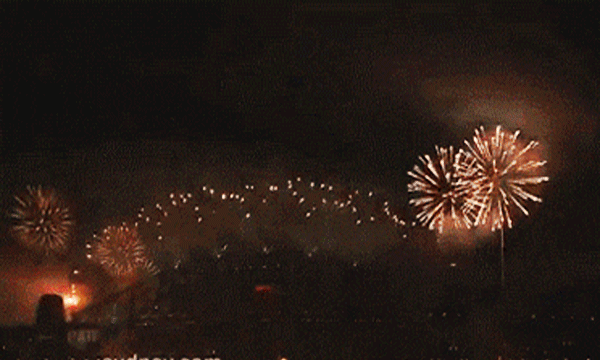
New Year’s festivities begin on December 31 (New Year’s Eve), the last day of the Gregorian calendar
New Year’s festivities begin: Civilizations around the world have been celebrating the start of each new year for at least four millennia. Today, most New Year’s festivities begin on December 31 (New Year’s Eve), the last day of the Gregorian calendar, and continue into the early hours of January 1 (New Year’s Day). Common traditions include attending parties, eating special New Year’s foods, making resolutions for the new year and watching fireworks displays.
Early New Year’s Celebrations
The earliest recorded festivities in honor of a new year’s arrival date back some 4,000 years to ancient Babylon. For the Babylonians, the first new moon following the vernal equinox—the day in late March with an equal amount of sunlight and darkness—heralded the start of a new year. They marked the occasion with a massive religious festival called Akitu (derived from the Sumerian word for barley, which was cut in the spring) that involved a different ritual on each of its 11 days. In addition to the new year, Atiku celebrated the mythical victory of the Babylonian sky god Marduk over the evil sea goddess Tiamat and served an important political purpose: It was during this time that a new king was crowned or that the current ruler’s divine mandate was symbolically renewed.
Throughout antiquity, civilizations around the world developed increasingly sophisticated calendars, typically pinning the first day of the year to an agricultural or astronomical event. In Egypt, for instance, the year began with the annual flooding of the Nile, which coincided with the rising of the star Sirius. The first day of the Chinese new year, meanwhile, occurred with the second new moon after the winter solstice.
In order to realign the Roman calendar with the sun, Julius Caesar had to add 90 extra days to the year 46 B.C. when he introduced his new Julian calendar.

January 1 Becomes New Year’s Day
The early Roman calendar consisted of 10 months and 304 days, with each new year beginning at the vernal equinox; according to tradition, it was created by Romulus, the founder of Rome, in the eighth century B.C. A later king, Numa Pompilius, is credited with adding the months of Januarius and Februarius. Over the centuries, the calendar fell out of sync with the sun, and in 46 B.C. the emperor Julius Caesar decided to solve the problem by consulting with the most prominent astronomers and mathematicians of his time. He introduced the Julian calendar, which closely resembles the more modern Gregorian calendar that most countries around the world use today.
As part of his reform, Caesar instituted January 1 as the first day of the year, partly to honor the month’s namesake: Janus, the Roman god of beginnings, whose two faces allowed him to look back into the past and forward into the future. Romans celebrated by offering sacrifices to Janus, exchanging gifts with one another, decorating their homes with laurel branches and attending raucous parties. In medieval Europe, Christian leaders temporarily replaced January 1 as the first of the year with days carrying more religious significance, such as December 25 (the anniversary of Jesus’ birth) and March 25 (the Feast of the Annunciation); Pope Gregory XIII reestablished January 1 as New Year’s Day in 1582.
New Year’s Traditions
In many countries, New Year’s celebrations begin on the evening of December 31 - New Year’s Eve - and continue into the early hours of January 1. Revelers often enjoy meals and snacks thought to bestow good luck for the coming year. In Spain and several other Spanish-speaking countries, people bolt down a dozen grapes-symbolizing their hopes for the months ahead-right before midnight. In many parts of the world, traditional New Year’s dishes feature legumes, which are thought to resemble coins and herald future financial success; examples include lentils in Italy and black-eyed peas in the southern United States. Because pigs represent progress and prosperity in some cultures, pork appears on the New Year’s Eve table in Cuba, Austria, Hungary, Portugal and other countries. Ring-shaped cakes and pastries, a sign that the year has come full circle, round out the feast in the Netherlands, Mexico, Greece and elsewhere. In Sweden and Norway, meanwhile, rice pudding with an almond hidden inside is served on New Year’s Eve; it is said that whoever finds the nut can expect 12 months of good fortune.
Other customs that are common worldwide include watching fireworks and singing songs to welcome the new year, including the ever-popular “Auld Lang Syne” in many English-speaking countries. The practice of making resolutions for the new year is thought to have first caught on among the ancient Babylonians, who made promises in order to earn the favor of the gods and start the year off on the right foot. (They would reportedly vow to pay off debts and return borrowed farm equipment.)
In the United States, the most iconic New Year’s tradition is the dropping of a giant ball in New York City’s Times Square at the stroke of midnight. Millions of people around the world watch the event, which has taken place almost every year since 1907. Over time, the ball itself has ballooned from a 700-pound iron-and-wood orb to a brightly patterned sphere 12 feet in diameter and weighing in at nearly 12,000 pounds. Various towns and cities across America have developed their own versions of the Times Square ritual, organizing public drops of items ranging from pickles (Dillsburg, Pennsylvania) to possums (Tallapoosa, Georgia) at midnight on New Year’s Eve.
History.com / Wikipedia / Encyclopedia Britannica / Ancient Origins / Live Science /
New Year’s festivities begin on December 31 (New Year’s Eve), the last day of the Gregorian calendar (YouTube) 

The first New Year's Eve celebration is held in Times Square on December 31, 1907
The first New Year's Eve celebration is held in Times Square: The surprising maritime origins of New Year’s Eve’s biggest party.
The biggest night of the year was quickly approaching, and Adolph S. Ochs needed to find new entertainment for his New Year’s Eve party. For the previous three years, the New York Times publisher had set the skies above Manhattan ablaze with a midnight fireworks show launched from the roof of his newspaper’s 25-story headquarters. The pyrotechnics had been a hit with the 200,000 revelers who filled the junction around Broadway and 42nd Street—newly rechristened Times Square after its famous tenant—but the hot ash that rained down upon them concerned New York City officials so much that they banned the fireworks from ushering in 1908.
Ochs wasn’t one to be easily deterred. His flashy New Year’s Eve bash had previously drawn crowds away from the traditional celebration in Lower Manhattan, where New Yorkers listened as the bells of Trinity Church rang in the new year. Yet without the fireworks show, Ochs would need a new spectacle to lure the masses to the hinterlands of Times Square for New Year’s Eve.
The New York Times chief found the inspiration he needed at the Western Union Building downtown, where a metal ball three-and-a-half feet in diameter dropped from the pinnacle of the building to signify the time every weekday at noon. Nearby city dwellers peeked their heads out of horse-drawn carriages and windows, craning their necks skyward as the sun reached its zenith. On the rare occasions that the operation malfunctioned, it was the talk of the town and fodder for the newspapers.
The New York Times publisher decided to put his own spin on the city’s beloved “time ball” to usher in 1908. As people poured out of theaters, restaurants and streetcars into Times Square on December 31, 1907, they gazed up to the top of the Times Tower and saw a dazzling orb made of wood and iron, illuminated with 100 electric light bulbs.
As the crowd counted down the final fleeting seconds of 1907, workers used ropes and pulleys to slowly lower the 700-pound ball down the flagpole crowning New York’s second-tallest building. Unlike the Western Union Building’s time ball and others like it, which signified the time at the moment the ball began to move, the sphere on top of the Times Tower marked the time when it completed its descent. When the ball reached the bottom of the flagpole, the number 1908 lit up on the skyscraper’s parapet to signal the arrival of the new year.

The ball drop was greeted, according to the New York Times, with a “wild human hullabaloo of noise”. People blew horns and rang cow bells. Motorists in their new automobiles honked their horns. On the Hudson River, steamships whistled, an appropriate reaction considering the nautical roots of the time ball itself.
Long before its starring role at the New Year’s Eve celebration, the device was developed as a means for keeping precise time at sea, where it was critical for navigation and determining longitude. Port cities had used the firing of guns or ringing of bells to signify noontime, but such methods proved too inaccurate for sea captains recalibrating their marine chronometers. To provide a visual cue to ships in port, the first time balls were erected in Portsmouth, England, in 1829, and at the Royal Observatory in Greenwich, England, in 1833, at the time when Great Britain was the world’s premier maritime power.
Typically perched at the highest point of cities, these brightly colored globes would be hoisted to the top of poles and then released at a precise time, usually at noon to mark mean solar time when the sun was directly overhead. The use of time balls spread to the United States in 1845, when one was placed atop the U.S. Naval Observatory in Washington, D.C.
Time balls became even more prevalent after the advent of telegraphy, when naval observatories could signal current times to other cities. “All port towns of any consequence erected time balls, mostly after the Civil War”, says historian Alexis McCrossen, author of Marking Modern Times: A History of Clocks, Watches, and Other Timekeepers in American Life.
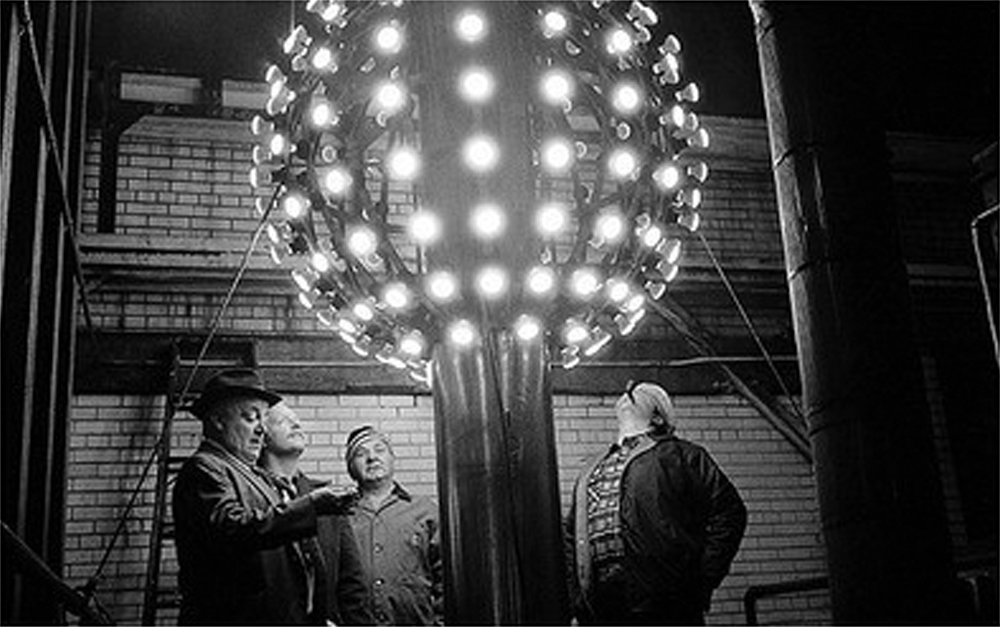
Although the time ball may seem a primitive or unnecessary method of public time-keeping, given the long history of clocks adorning churches and civic buildings, McCrossen says they were actually seen as modern symbols of precision. “Any resident of an American city in the first decade of the 20th century would have known what a time ball was. You were a forward-looking place if you had one”, she says.
Soon, timekeeping orbs began to appear in landlocked cities such as Crete, Nebraska. There were even suggestions to place one on top of the Washington Monument. At the time the ball drop was introduced in Times Square, time balls were still in use at prominent locations from the Executive Office Building next to the White House in Washington, D.C., to San Francisco’s Ferry Building. The time ball in the nation’s capital remained in use until 1936, when radio communications rendered it truly obsolete.
The time ball survived well into the 20th century in part because it offered a spectacle. “It was exciting in the way the time ball in Times Square is exciting. There was something about anticipating and waiting for the ball to fall”, McCrossen says. “I don’t think the anticipation of bells ringing is the same as seeing an orb at the top of a pole. It’s magnetic in a way.”
The ball drop from the Times Tower quickly became a New Year’s Eve tradition. It endured even after the New York Times moved into a new building around the corner in 1913, and has only been interrupted in 1942 and 1943, when New York City was under World War II dim-out restrictions due to German submarines lurking in the Atlantic Ocean. In those two years, organizers harkened back to the old Trinity Church tradition with the ringing of bells from sound trucks parked in Times Square.
The ball itself has been through numerous makeovers in the decades since its debut, and is now in its seventh iteration. It was converted to iron in 1920 and aluminum in 1954. During the 1980s, the ball was dressed up as an apple for the “I Love New York” advertising campaign. In 1995, it became a glitter ball worthy of Studio 54 when it was covered with 10,000 rhinestones. For the dawn of the millennium, organizers crafted the largest crystal ball in the world, and in 2007 added LED lighting to allow the geodesic sphere composed of 2,688 Waterford Crystal triangles to change colors and patterns like a kaleidoscope.
More than a century after the first ball drop, the job of lowering the six-ton sparkling orb is now computerized and timed to an atomic clock to ensure that it completes its descent precisely at midnight—much to the delight of the one million people in Times Square who welcome the arrival of the future through a signal from the past.
History.com / Wikipedia / Encyclopedia Britannica / Times Square Official Website.org / New York City Architecture
The first New Year's Eve celebration is held in Times Square on December 31, 1907 (YouTube) 
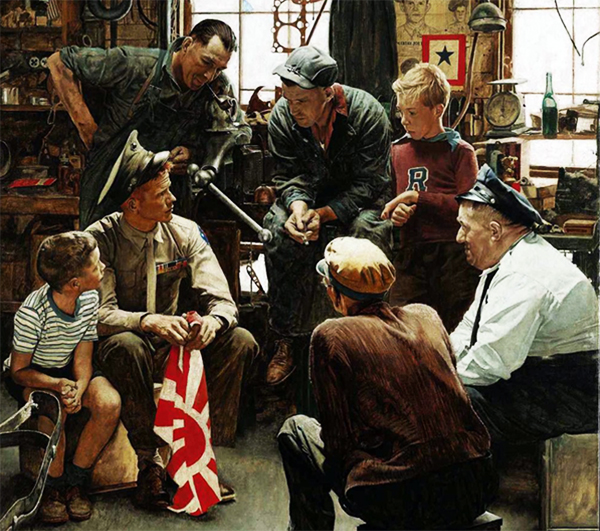
Understanding Military Terminology
Naval Air Training and Operating Procedures Standardization Manual
(DOD) Series of general and specific aircraft procedural manuals that govern the operations of naval aircraft.
Also called NATOPS manual.
Joint Publications (JP 3-04) Joint Shipboard Helicopter Operations
Naval Beach Group
A permanently organized naval command within an amphibious force composed of a commander and staff, a beachmaster unit, an amphibious construction battalion, and assault craft units, designed to provide an administrative group from which required naval tactical components may be made available to the attack force commander and to the amphibious landing force commander.
Also called NBG.
See also Shore Party.
Joint Publications (JP 3-02) Amphibious Operations
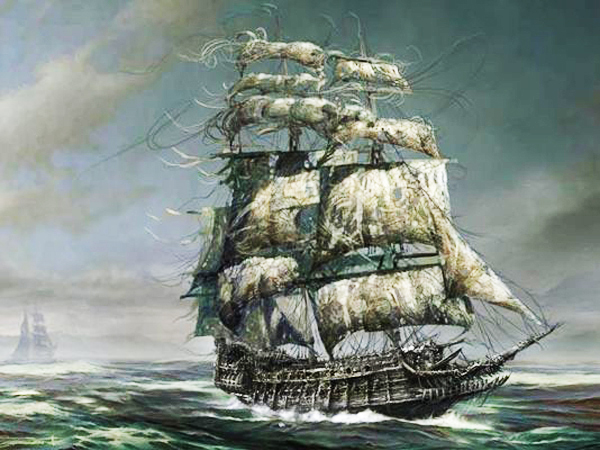
The Old Salt’s Corner
“Tales of Legendary Ghost Ships”
Legend of the Ghost Ship Lady Lovibond - the ghost ship that reappears every 50 years
On February 13, 1748, a three mast schooner called the Lady Lovibond left port for a leisurely sail along the Thames River near Kent, England with the final destination of Oporto, Portugal.
The captain, Simon Reed, had just been married and brought his new wife, Annetta, with him for a honeymoon voyage.
The crew were below decks celebrating with the new bride and groom except for the Bosun and First Mate, John Rivers. Although Rivers had served his captain as best man at the wedding, he was also in love with the beautiful bride.
The more he thought of her, the more jealous he became until finally, unable to bear his anger any longer he decided to take action. The ship was passing a notorious stretch of the English Channel called the Goodwin Sands.
The Goodwin Sands is a nine-mile stretch between Kingsdown, Kent and Pegwell Bay and is still one of the most dangerous passages of the English Channel.
During low tide, as much as a tenth of the total area can be exposed and one can walk on the sediment. There have even been cricket matches played on the Goodwin Sands.
Over one thousand wrecks have been recorded in this area since 1298, and the area has become a virtual ship’s graveyard.
Frequently when ships attempt to sail through at high tide, the sediment quickly moves about and sucks the ship down into the Sands with the stern only partially supported. This leads to the ship’s back being broken and unable to sail once the tide comes back in. The entire ship is engulfed with great loss of life.
As the Lady Lovibond passed through the area Rivers attacked the Bosun and took over the ship. He intentionally steered the ship onto the Goodwin Sands destroying the ship and killing everyone aboard.
Exactly fifty years to the day after the Lady Lovibond was destroyed the captain of the ship “Edenbridge” recorded in his log that he had almost collided with a schooner with three masts.
Another fifty years passed and again on the 13th of February locals saw a three masted schooner head toward the Sands. Again, no evidence of wreckage was found.
In 1848 the same ship was reported to have been seen breaking up in the very same area with no shipwreck in sight.
The last report was filed in 1948 by Captain Bull Preswick. He was convinced he saw an actual ship that was described as the Lady Lovibond but was surrounded by a green glow as it entered the Sands.
The folktales of the ghost ship created so much attention that many curious onlookers made their way to the Sands in 1998 to catch a glimpse of the legendary ship but were all disappointed when no ship appeared.
Were the tales made up to entertain the gullible or were the reports made by people who actually believed they saw the Lady Lovibond on its way to its watery grave every fifty years?
The Vintage News
/ YouTube 

“I’m Just Sayin”
“Impudence is the worst of all human diseases.”
“When love is in excess,
it brings a man no honor, nor worthiness.”
“Events will take their course,
it is no good of being angry at them;
he is happiest who wisely turns them to the best account.”
~ Euripides

“Thought for the Day”
“You cannot swim for new horizons
until you have courage to lose sight of the shore.”
“Never be afraid to raise your voice for honesty and truth
and compassion against injustice and lying and greed.
If people all over the world would do this,
it would change the earth.”
“Given a choice between grief and nothing,
I’d choose grief.”
~ William Faulkner

“What I Learned”
“The difference between who you are
and what you want to be
is what you do.”
“There is always,
always something to be
thankful for.”
“We were all humans until
race disconnected us,
religion separated us,
politics divided us,
and wealth classified us.”
~ Anonymous

Mr. Answer Man Please Tell Us: Why Do Fruitcakes Last So Long?
Fruitcake is a shelf-stable food unlike any other. One Ohio family has kept the same fruitcake uneaten (except for periodic taste tests) since it was baked in 1878. In Antarctica, a century-old fruitcake discovered in artifacts left by explorer Robert Falcon Scott’s 1910 expedition remains “almost edible”, according to the researchers who found it. So what is it that makes fruitcake so freakishly hardy?
It comes down to the ingredients. Fruitcake is notoriously dense. Unlike almost any other cake, it’s packed chock-full of already-preserved foods, like dried and candied nuts and fruit. All those dry ingredients don’t give microorganisms enough moisture to reproduce, as Ben Chapman, a food safety specialist at North Carolina State University, explained in 2014. That keeps bacteria from developing on the cake.

Booze helps. A good fruitcake involves plenty of alcohol to help it stay shelf-stable for years on end. Immediately after a fruitcake cools, most bakers will wrap it in a cheesecloth soaked in liquor and store it in an airtight container. This keeps mold and yeast from developing on the surface. It also keeps the cake deliciously moist.
Fruitcakes aren’t just capable of surviving unspoiled for months on end; some people contend they’re better that way. Fruitcake fans swear by the aging process, letting their cakes sit for months or even years at a stretch. Like what happens to a wine with age, this allows the tannins in the fruit to mellow, according to the Wisconsin bakery Swiss Colony, which has been selling fruitcakes since the 1960s. As it ages, it becomes even more flavorful, bringing out complex notes that a young fruitcake (or wine) lacks.
If you want your fruitcake to age gracefully, you’ll have to give it a little more hooch every once in a while. If you’re keeping it on the counter in advance of a holiday feast a few weeks away, the King Arthur Flour Company recommends unwrapping it and brushing it with whatever alcohol you’ve chosen (brandy and rum are popular choices) every few days. This is called “feeding” the cake, and should happen every week or so.
Honestly, it would probably taste OK if you let it sit in brandy for a few days.
Smithsonian / Wikipedia / Encyclopedia Britannica / Daily Mail / National Geographic /
Quora / Mental Floss /
Why Do Fruitcakes Last So Long? (YouTube) 

NAVSPEAK aka U.S. Navy Slang
Irish Pennant: Loose thread on uniform.
Iron Bottom Sound: A term used to this day to describe the waters between Guadalcanal, Savo Island, and Florida Island in the Solomon Island chain, because of the large number of ships sunk in that area during World War II. It is considered by the Navy as sacred waters, and, every year during the commeration of the Naval Battle of Guadalcanal, a ship in the area will put out to sea, and drop a wreath in the area to honor the dead.
INT WTF: Letters Pronounced Individually. INTerrogative What The Fuck.
See WTFO. Usually used in a text/teletype medium where WTFO is over voice communications.
I Want One Jammed In My Ass, Little Pricks Hurt 2: The USS IWO JIMA LPH-2.
IYAOYAS: Unofficial acronym commonly found on the uniforms of airedales who specialize in ordnance handling.
Read as “If you ain't ordnance, you ain't shit” Pronounced “eye-OH-yahs” and yelled out during ceremonies; also known as “If you're ordnance, your ASVAB sucked.”
IYARYAS: Unofficial acronym used by Reactor Department to make fun of the similar phrase, IYAOYAS, used by ordinance.
Note: Reactor department is well aware that both phrases are dumb, but it is highly effective at trolling.
Wiktionary.org

Just for you MARINE
Inkstick: Pen.
Irish Pennant or IP: Any loose thread, string, or strap on a uniform or equipment that detracts from a perfect appearance.
Iron Mike: Iron Mike originally a nautical term for a gyrocompass; name for various memorial statues, such as at Parris Island, SC, Quantico, VA, and Belleau, France; nickname bestowed on Marines who score a perfect 300 points on the Physical Fitness Test; nickname for a company or battery named “M” or “Mike” in NATO phonetic alphabet.
In Country: Phrase referring to being within a war zone.
IRR: PIndividual Ready Reserve, branch of the reserve that most former servicemembers fall under upon the end of active service, may be called to involuntarily return to active status.
Wikipedia.org
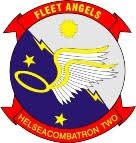
Naval Aviation Squadron Nicknames
HSC-2 Helicopter Sea Combat (HSC) Squadron TWO - nicknamed the “Fleet Angels”
United States Navy Naval Air Station - Helicopter Sea Combat (HSC), Naval Station Norfolk, Virginia / Squadron Lineage: HSC-2 (2nd): April 01, 1987 - August 24, 2005 / HSC-2: August 24, 2005 - present.

Where Did That Saying Come From?

“The law is an ass:”
Meaning: Said of the application of the law that is contrary to common sense.
History: This proverbial expression is of English origin and the ass being referred to here is the English colloquial name for a donkey, not the American 'ass', which we will leave behind us at this point. Donkeys have a, somewhat unjustified, reputation for obstinance and stupidity that has given us the adjective 'asinine'. It is the stupidly rigid application of the law that this phrase calls into question.
It is easy to find reference works and websites that attribute the phrase to Charles Dickens, who put it into print in Oliver Twist, 1838. When Mr. Bumble, the unhappy spouse of a domineering wife, is told in court that “...the law supposes that your wife acts under your direction”, replies:
“If the law supposes that”, said Mr. Bumble, squeezing his hat emphatically in both hands, “the law is a ass - a idiot.”
In fact, 'the law is an ass' is from a play published by the English dramatist George Chapman in 1654 - Revenge for Honour:
“Ere he shall lose an eye for such a trifle... For doing deeds of nature! I'm ashamed. The law is such an ass.”
'Published by' doesn't necessarily mean 'written by'. In 1653, Chapman's play was registered, as The Parricide, or, Revenge for Honor, to fellow playwright Henry Glapthorne. Some scholars contend that the play was the work of neither gentlemen and was written around 1620.
Whoever the author was, we can be sure it wasn't Charles Dickens. However, it was Dickens who brought the phrase to the general public. Oliver Twist was an enormous success when it was first published as a serial and has become one of the world's best selling novels.
Phrases.org UK

Science & Technology

Clearing the (high) air
• ‘Stature gene’ may reveal why these hunter-gatherers are among the world’s smallest humans
• Changing sperm speed can influence offspring’s sex, mouse study suggests
• Vanishing Arctic ice will open the way for more science voyages, analysis suggests
• Top stories: Skin-seeing caterpillars, a climate ‘reality check,’ and why cats eat grass
• Light reflected off fresh snow can outshine the moon
• The world’s biggest frogs build their own ponds
• Tentacled microbe could be missing link between simple cells and complex life
Science AAAS

Bizarre News (we couldn’t make up stuff this good - real news story)
Ghostly ‘Snow Kangaroos’ Filmed Hopping After Rare Snow Storm In Australia

Footage has emerged of kangaroos bounding through a field in Australia that has been blanketed in snow.
After strong winds and freezing winter conditions swept across three south-eastern states, parts of the country experienced rare snowfall.
Twitter user Stephen Grenfell filmed the kangaroos as he drove past their paddock in New South Wales. Posting the clip, he wrote:
“Not something you see every day in Australia. Kangaroos in the snow.”
In response, another user posted a photo of kangaroos in the snow on a golf course.
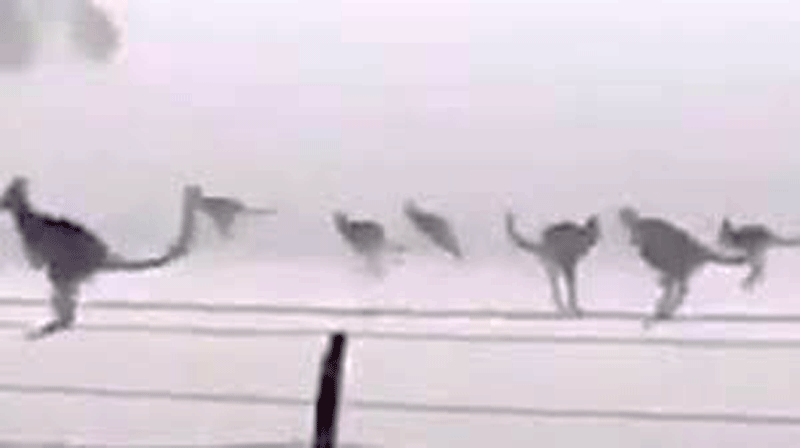
Meteorologists have said this is one of the coldest outbreaks to hit Australia in recent years.
In the capital Canberra local media reported that an Australian rules football match was played in the snow for the first time.
• Destructive winds batter Australia and snap pier
• From June: Rare snow falls in parts of Australia
The snowfall also led to road closures outside of Sydney.
The cold front also caused flights cancellations and power cuts in about 10,000 homes in the south of the country.
Australia has experienced extreme weather events in the past year, including floods, bushfires and cyclones.
It also continues to be ravaged by a prolonged drought which has put significant strain on rural communities.
BBC (08/13/2019) 

Second Hand News: Articles from Week 01 - December 30, 2019 - January 05, 2020
 Iran's 'shadow commander' Qassim Soleimani killed in U.S. airstrike in Iraq
• “Bigger than Bin Laden:” Iran expert hails Qassim Soleimani's killing as 'massive blow to the regime'
• Three rockets hit Iraqi military base near Baghdad airport
• Pentagon declares U.S. killed Qassim Soleimani on Trump's orders
Iran's 'shadow commander' Qassim Soleimani killed in U.S. airstrike in Iraq
• “Bigger than Bin Laden:” Iran expert hails Qassim Soleimani's killing as 'massive blow to the regime'
• Three rockets hit Iraqi military base near Baghdad airport
• Pentagon declares U.S. killed Qassim Soleimani on Trump's orders
President Trump: “To those many millions of people in Iraq who want freedom and who don’t want to be dominated and controlled by Iran, this is your time!”... Iran will “pay a very BIG PRICE” - Iran-backed militia supporters withdraw from U.S. Embassy
• Republican senator says Qassim Soleimani was 'evil bastard who murdered Americans'
• Democrat questions whether Trump had 'congressional authorization' to kill Qassim Soleimani
Biden's Senate records to remain secret for 2020 vote
• Exclusive: Trump list shows 319 'results' and promises kept in three years
• New York Times finally comes back to admitting Ukraine interfered in the 2016 U.S. election
• 'Cruel slave owner': Democratic Virginia Governor Ralph Northam to push for removing Robert E. Lee statue from Capitol
Washington Examiner
 President Trump takes out top Iranian military leaders, including the HEAD of elite Quds Force, in missile strike in revenge for attack on Baghdad U.S. embassy - then tweets picture of Stars and Stripes
• 'You can't do a damn thing!' Iran's supreme leader Ayatollah Khamenei hits back at Donald Trump after the president threatened to make him pay a 'BIG PRICE' for U.S. embassy attack
• Obama welcomed leader of U.S. embassy attack at the White House: Iran's 'point man' in Baghdad Hadi al Amiri was hosted in the Oval Office in 2011 - eight years before he orchestrated siege in Iraq
President Trump takes out top Iranian military leaders, including the HEAD of elite Quds Force, in missile strike in revenge for attack on Baghdad U.S. embassy - then tweets picture of Stars and Stripes
• 'You can't do a damn thing!' Iran's supreme leader Ayatollah Khamenei hits back at Donald Trump after the president threatened to make him pay a 'BIG PRICE' for U.S. embassy attack
• Obama welcomed leader of U.S. embassy attack at the White House: Iran's 'point man' in Baghdad Hadi al Amiri was hosted in the Oval Office in 2011 - eight years before he orchestrated siege in Iraq
Fired FBI deputy director Andy McCabe apologized for changing his story '180 degrees' during internal investigation into leak about Hillary's email probe
• Joe Biden lags behind Bernie Sanders and Pete Buttigieg with $22.7 million fundraising total in last quarter of 2019 and hints at his son's troubles in thank-you to supporters for 'vouching for the family'
• Democratic hopeful Tulsi Gabbard kicks off 2020 surfing in New Hampshire as she dons 'winter wetsuit' to ride 40F waves
U.S. officials announce BAN on flavored e-cigarette cartridges in an effort to combat the youth vaping epidemic
• 'Affluenza' teen Ethan Couch, 22, is arrested after 'testing positive for THC while on probation' for killing four and paralyzing one in drunken 2013 crash
• Texas judge rules hospital can remove 11-month-old Tinslee Lewis from life support despite protest from her distraught family
Daily Mail UK
 CORRUPTION CHRONICLES: Judicial Watch Finds Millions of ‘Extra’ Registrants on Voting Rolls - Warns California, Pennsylvania, North Carolina, Colorado, Virginia to Clean Up Voting Rolls or Face a Federal Lawsuit
CORRUPTION CHRONICLES: Judicial Watch Finds Millions of ‘Extra’ Registrants on Voting Rolls - Warns California, Pennsylvania, North Carolina, Colorado, Virginia to Clean Up Voting Rolls or Face a Federal Lawsuit
“Investigating the Investigators:” 2019 Judicial Watch VICTORY: Kentucky Removes 250K Inactive Voters – There’s Still More To Be Done
Judicial Watch Sues CIA and DOJ for Communications of CIA Analyst Eric Ciaramella
Judicial Watch Sues FBI/DOJ for Emails Tied to So-Called “Whistleblower”
Judicial Watch's 2019 Year in Review
Judicial Watch

Why does Pelosi believe McConnell will obey Pelosi?

FISA court demands answers starting January 10.

Cry Havoc: 1 of 4: How the Arms Race Drove the World to War
 2 of 4
2 of 4
 3 of 4
3 of 4
 4 of 4
4 of 4

Black Earth:The Holocaust as History and Warning
 2 of 12
2 of 12
 3 of 12
3 of 12
 4 of 12
4 of 12
 5 of 12
5 of 12
 6 of 12
6 of 12
 7 of 12
7 of 12
 8 of 12
8 of 12
 9 of 12
9 of 12
 10 of 12
10 of 12
 11 of 12
11 of 12
 12 of 12
12 of 12
 John Batchelor (01/03/2020)
John Batchelor (01/03/2020)


SONG FACTS

“Time Is On My Side” - The Rolling Stones
Album: 12 x 5
Released 1964 
This song was originally recorded by the jazz trombonist Kai Winding and his Orchestra on the Verve Records label in October 1963. His version was mostly instrumental with just the lyric “Time Is On My Side”  sung by the background trio of Cissy Houston, Dionne Warwick and Dee Dee Warwick.
sung by the background trio of Cissy Houston, Dionne Warwick and Dee Dee Warwick.
The first fully vocal version was recorded by the New Orleans soul singer Irma Thomas; her version was released  as the B-side of “Anyone Who Knows What Love Is (Will Understand)”
as the B-side of “Anyone Who Knows What Love Is (Will Understand)”  in June 1964.
in June 1964.
The Rolling Stones released their version of the song in the U.S. on September 26, 1964, and it became their first Top 10 hit in America. Thomas' version contains a spoken part in the middle that the Stones left out.
The lyrics were most likely written by Jimmy Norman, who was a member of The Coasters. The songwriting credit is unclear, and usually lists Jerry Ragovoy, who wrote “Piece Of My Heart“  and “Try (just a little bit harder)”
and “Try (just a little bit harder)”  for Janis Joplin, as the only writer, sometimes as “Norman Meade”, which he used as a pseudonym. Thomas' original single lists the credit as “J. Norman - N. Meade”. Ragovoy, who also produced the song for Thomas, died in 2011 at age 80.
for Janis Joplin, as the only writer, sometimes as “Norman Meade”, which he used as a pseudonym. Thomas' original single lists the credit as “J. Norman - N. Meade”. Ragovoy, who also produced the song for Thomas, died in 2011 at age 80.
In this song, Mick Jagger has lost his girl, but he knows it's just a matter of time until he returns. After all, he's got “the real love, the kind that you need”.
Keith Richards said of this song: “In America we were basically known for heavy, slowish kind of ballads. 'Time Is On My Side'  , 'Tell Me'
, 'Tell Me'  , 'Heart of Stone'
, 'Heart of Stone'  that was what we were known for. Strangely enough that was our thing. Every single was a slow song. Who would believe it? You'd think they'd be clamoring for out-and-out rock and roll, but no, it was the soul ballads that happened for us in America.”
that was what we were known for. Strangely enough that was our thing. Every single was a slow song. Who would believe it? You'd think they'd be clamoring for out-and-out rock and roll, but no, it was the soul ballads that happened for us in America.”
This was one of two songs The Stones performed on their first Ed Sullivan Show appearance, October 25, 1964. The other was “Around And Around”  , a Chuck Berry cover.
, a Chuck Berry cover.
That February, The Beatles made their historic debut on Sullivan to crowd hysteria. The Stones hadn't yet developed a fan base in America, but the teenage girls in the audience still went crazy. The appearance earned them lots of attention and helped send “Time Is On My Side” up the chart - it reached #6 on December 5.
The Stones returned to the show five more times, always earning a wildly enthusiastic greeting from the crowd. On their fifth appearance, they capitulated to Sullivan by changing “Let's Spend The Night Together”  to “Let's Spend Some Time Together”.
to “Let's Spend Some Time Together”.
The Rolling Stones released two versions of this song. The U.S. single was recorded in England and is slower, with a gospel organ. The British version was recorded at Chess studios in Chicago.
The Rolling Stones official site / Rock & Roll Hall of Fame / Billboard / All Music / Song Facts / Ultimate Classic Rock / The Rolling Stones
Image: “12 x 5 (album)” by The Rolling Stones

Trivia
● What two teams played in the first Super Bowl game, on January 15, 1967 and who won?
Answer to Trivia
● What is the farthest planet in our solar system visible to the unaided eye?
Answer to Trivia
● What do we call the food item consisting of toast, ham, poached eggs, and hollandaise sauce?
Answer to Trivia
● In 1962, European countries joined forces to establish an international astronomical project. They set up a space observatory, with some of the most powerful telescopes in the world, at La Silla, in which southern country?
Answer to Trivia
● Which NFL team is the first to win 4 Super Bowls?
Answer to Trivia
The Roman Catholic Church was one of the first to observe January 1, as the New Year, because that is what the Gregorian calendar dictated.
• The first month of the year - January, is named after Janus, the god that has two faces, one facing backward and one facing forward.
You must have heard of people making resolutions, like getting rid of a bad habit of taking up a new hobby - on New Year’s Eve that they intend on following through for the rest of the upcoming year.
• The ancient Persians gave gifts of eggs on the eve, which symbolized productiveness.
The ball dropping ceremony in Times Square, New York, has become one of the iconic images of New Year’s Eve celebrations.
• It is not the oldest celebration, The New York Times produced the first rooftop celebration atop One Times Square, when a fireworks display took place in 1904 to inaugurate their new headquarters in Times Square on New Year’s Eve.
• The tradition was suspended for two consecutive years - 1942 and 1943 - because of the World War II.
Many people around the United States will feast on black-eyed peas on New Year’s Eve as they believe that it brings good luck.
• In Ireland, Germany and Italy, leafy greens and legumes are eaten.
• The Japanese, on the other hand, believe that eating long noodles on New Year’s Eve means that they would be granted the gift of long life in the coming year.
• Mexico, Greece and other places celebrate the holiday by feasting on ring-shaped cakes, which are meant to denote the fact that life has come a full cirle.
“Auld Lang Syne”, a poem written by Scottish poet Robert Burns in 1788, is traditionally sung on New Year’s Eve.
• It is believed to be based on an old folk song. The words “auld lang syne” mean “times gone by”.

A Test for People Who Know Everything
From the Jeopardy Archives Category - “POPCORN” ($200)
“Legend says in 1621 Native Americans introduced the Pilgrims to popcorn by bringing it to this celebration.”
● Answer for People Who Do Not Know Everything, or Want to Verify Their Answer History.com
From the Jeopardy Archives Category - “POPCORN” ($400)
“Popcorn is mostly this type of carbohydrate that provides energy & also stiffens shirt collars.”
● Answer for People Who Do Not Know Everything, or Want to Verify Their Answer Healthline
From the Jeopardy Archives Category - “POPCORN” ($600)
“This product from Orville Redenbacher's is 'a little sweet, a little salty--and a whole lot of yummy'.”
● Answer for People Who Do Not Know Everything, or Want to Verify Their Answer The Kitchn
From the Jeopardy Archives Category - “POPCORN” ($800)
“In 2003 Governor Blagojevich signed a bill that made popcorn this state's official snack.”
● Answer for People Who Do Not Know Everything, or Want to Verify Their Answer Chicago Tribune
From the Jeopardy Archives Category - “POPCORN” ($1,000)
“In 1914 America got its first commercial popcorn brand, this one with an upbeat name.”
● Answer for People Who Do Not Know Everything, or Want to Verify Their Answer Funding Universe
Answer to Last Week's Test
From the Jeopardy Archives Category - “ACCORDING TO BLACK'S LAW DICTIONARY” ($200)
“'Parental' this is 'given on a minor's behalf... for the minor to engage in or submit to a specified activity'.”
● Answer: Consent. The Law Dictionary.org
From the Jeopardy Archives Category - “ACCORDING TO BLACK'S LAW DICTIONARY” ($400)
“The act...of officially nullifying punishment or other legal consequences of a crime.”
● Answer: a Pardon. The Law Dictionary.org
From the Jeopardy Archives Category - “ACCORDING TO BLACK'S LAW DICTIONARY” ($600)
“A person who settles on property without any legal claim or title.”
● Answer: a Squatter. The Law Dictionary.org
From the Jeopardy Archives Category - “ACCORDING TO BLACK'S LAW DICTIONARY” ($800)
“A writ... directing a law enforcer to make an arrest, a search, or a seizure.”
● Answer: a Warrant. The Law Dictionary.org
From the Jeopardy Archives Category - “ACCORDING TO BLACK'S LAW DICTIONARY” ($1,000)
“The judicial procedure by which a testamentary document is established to be a valid will”
● Answer: Probate. The Law Dictionary.org

Joke of the Day

“THE BOSS WONDERED WHY”
The boss wondered why one of his most valued employees was absent, but had not phoned in.
Needing to have an urgent work problem resolved, he dialed the employee's home phone number and was greeted by a child's whispered, “Hello.”
“Is your Daddy home?” he asked.
“Yes”, whispered the small voice.
“May I talk with him?”
The child whispered, “No.”
Surprised and wanting to talk with an adult, the boss asked, “Is your Mommy there?”
“Yes.”
“May I talk with her?”
Again the small voice whispered, “No.”
Hoping there was someone with whom he could leave a message, the boss asked, “Is anyone else there?”
“Yes”, whispered the child, "a policeman.”
Wondering what a cop would be doing at his employee's home, the boss asked, “May I speak with the policeman?”
“No, he's busy”, whispered the child.
“Busy doing what?”
“Talking to Mommy and Daddy and the Fireman”, came the whispered answer.
Growing more worried as he heard a loud noise through the earpiece on the phone, the boss asked, “What is that noise?”
“A helicopter”, answered the whispering voice.
“What is going on there?” demanded the boss, now truly apprehensive.
Again, whispering, the child answered, “The search team just landed a helicopter.”
Alarmed, confused, and a little frustrated, the boss asked, “What are they searching for?”
Still whispering, the young voice replied with a muffled giggle...“Me!”




































